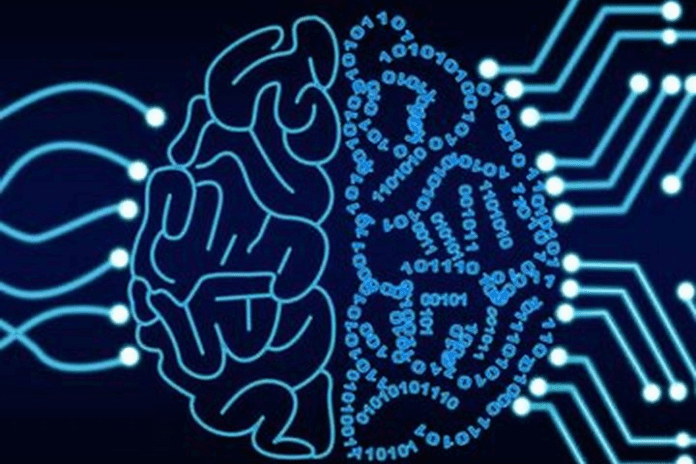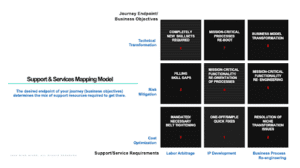As the wave of digital transformation accelerates across industry sectors, businesses face a challenging landscape laden with complexity and risk. Intelligent, far-edge computing, AI-infused applications, non-stop connectivity at the speed of 5G, and the cloud are all coming together to provide transformative possibilities.
These converging trends are particularly significant for intelligent systems in industries such as aerospace and defense, automotive and telecommunications, where security, safety and reliability are of paramount importance. To fully use the potential of intelligent systems, companies need to clearly define their objectives and carefully assess the solutions and support that may be required to successfully achieve them.
It’s all about your journey
The first step is to map out your journey’s destination, after which you can determine what kind of support you might need to get there. It depends on the complexity of your mission, your end-point objectives and the level of expertise you and your team possess—be it novice, expert, or in between.
Let’s say you’re navigating restaurants on your first trip to Japan and you need some local guidance to help with the menu. You’re a novice, but it’s not a very complex or mission-critical situation, so one orientation session may do. On your next dining outing, you’re comfortable doing it yourself; no guidance may be required.
Now, let’s take complexity up several notches: Everest is calling. You need training, equipment and an experienced guide. Making the right decisions, as a first-timer or even a veteran climber, is critical—the mission is to return safely from your expedition. It’s these complex, important journeys, business or personal, that require pin-point mapping. Only then will you have a clear vision of the resources needed to meet your objectives. Following is a simple model.
Map your business objectives to potential resources.
Keep it simple using broad categories: What are you trying to achieve: cost optimization, risk mitigation, and/or technical transformation? What kind of solutions/services are called for: labor arbitrage, intellectual property (IP) development, and/or business process re-engineering? Use this “bingo card” to identify the right level(s) of expertise and support you need:
None of the squares you might need to fulfill your objectives is mutually exclusive, and all may apply depending on your circumstances. For instance, labor arbitrage (off-shoring for cost reduction, on-boarding new workers, or bringing in highly skilled experts) can help contain costs, reduce risk, and add skills needed for technical transformation. Likewise, cost optimization may be beneficial across the board, although it might not be the optimal strategy. What you want is the solution that offers the best value proposition. Doing IP development or business re-engineering on the cheap may work out in limited, non-strategic cases, such as developing printer drivers or applications powered by digital signal processors (DSP). But going with the cheapest solution could create costly risks—inexperienced workers, slower time-to-market, budget overruns—especially when you move up the complexity scale into intelligent systems.
Let’s look at a few examples.
Enabling transformation with new skill sets and mission-critical processes
Automobile manufacturers have traditionally been in the business of building vehicles, not advanced, hyper-connected digital systems like onboard infotainment consoles or smart, data-driven automated systems like ADAS (advanced driver-assistance systems). Even OEMs that supply major automotive players are often not equipped for such complexity. Neither the auto manufacturer or OEM are specialized software companies. They are venturing into unfamiliar technical terrain that, if implemented correctly (risk mitigation), can reinforce the manufacturer’s position as a competent competitor in the intelligent systems arena.
What’s the right solution(s)? In the case of one of our customers, the introduction of entirely new skillsets (labor arbitrage) and new, mission-critical functionalities (IP development) was the answer (squares 4, 6, and 7 in the mapping model).
This scenario applies likewise for telcos deploying 5G networks. It’s a whole new situation. Transformative technologies require re-oriented production processes and a higher level of skilled labor, as opposed to a commoditized workforce.
Mitigating risk by filling skill gaps and developing innovative IP
At the midpoint of the complexity scale lies risk mitigation. Here, effective solutions require more expertise than those for cost optimization, although not to a level as high as technical transformation. In our business, we assist a number of telcos, mobility, and networking companies by providing interim services (Square 3) and specialized IP (square 4) to maintain and manage Linux distribution. This requires unique capabilities, which are not easy to find. Doing it right every time by people who have done it time and again reduces the risk of costly errors and frees up customer development teams to concentrate on initiatives that add more value to their business.
Product certification is a similar case. With literally hundreds of engineering specifications, international standards and regulatory mandates requiring compliance—from security and privacy to health and safety—it’s a daunting, time-consuming task that requires injecting mission-critical functionality into testing processes (Square 4). Any delays in certification risk a slower time-to-market, if not total failure. It’s not a suitable task for people who have never done it before. Experience matters.
Intelligent systems demand intelligent solutions
As the adoption of intelligent systems at the edge becomes more widespread, mission critical takes on a new meaning. For products that depend on consistent, real-time performance, reliability is paramount, and can even mean life or death as in the case of autonomous vehicles. Transformative technologies require the adoption of new skills and unique IP.
Accordingly, as product developers ascend the complexity scale, you can expect to see growing demand for higher-level resources as shown in the Support & Services Mapping Model outlined here.

